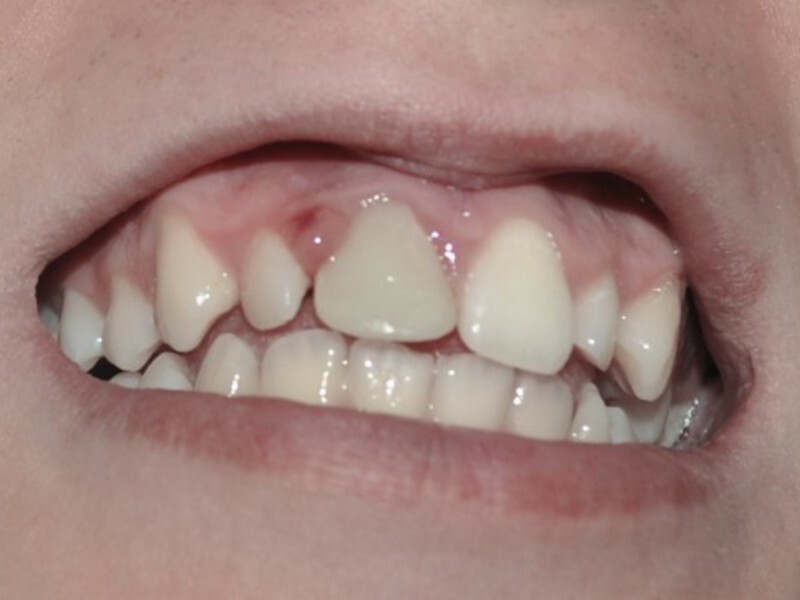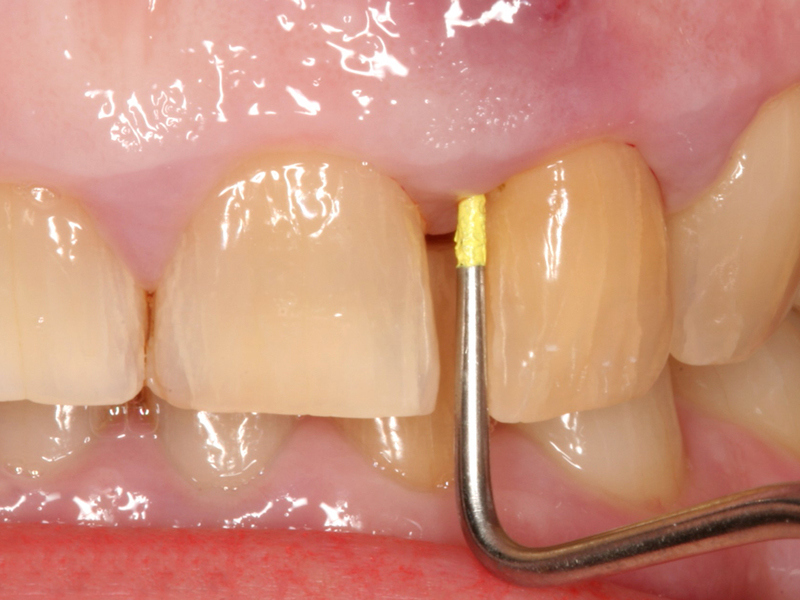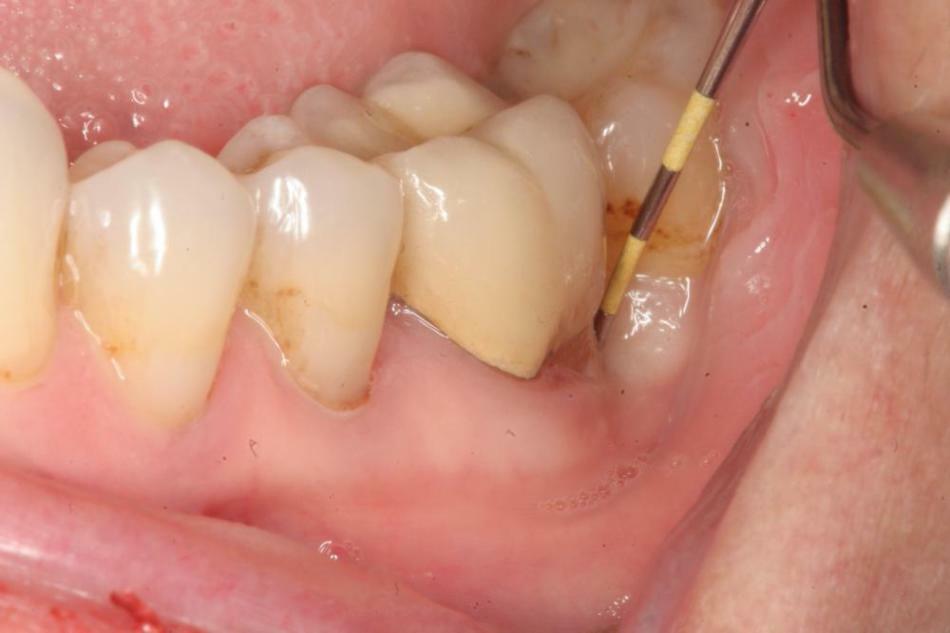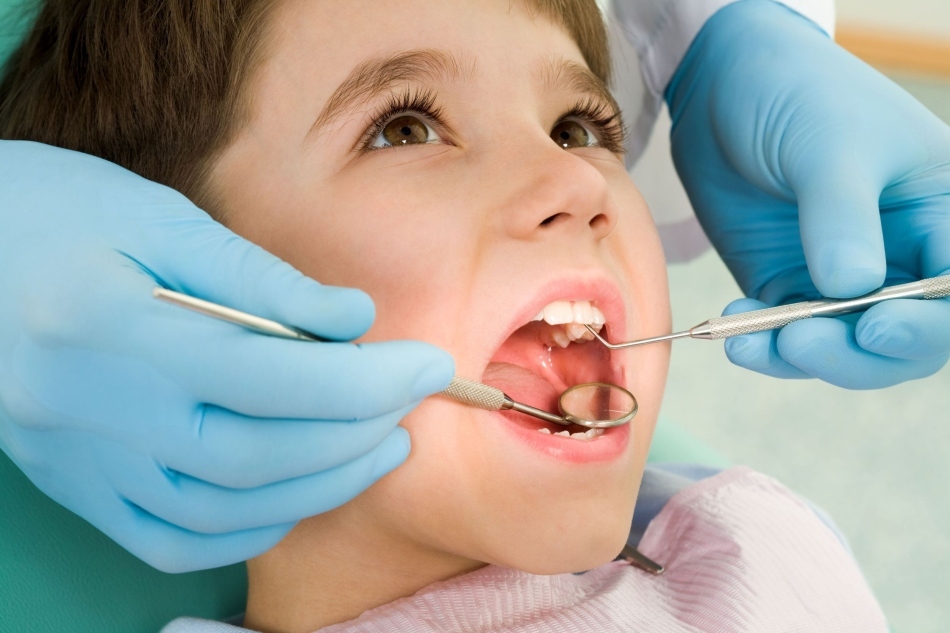Ways of treating the fistula on the gum with folk methods and antibiotics.
Contents of
- What is a fistula on the gums, what does it look like?
- Purulent fistula on the gum: symptoms and causes
- What is dangerous for the fistula on the gum, what consequences can there be?
- Fistula on the gums treatment with antibiotics, which ones?
- Fistula on the gum: treatment at home
- Fistula on the gum: folk remedies
- How to cure a fistula on the gums than rinse?
- Fistula in a child on the gum of a baby's tooth: what to do?
- Fistula on the gums during pregnancy, how to treat?
- After tooth extraction, fistula
- Can the fistula on the gum go through itself?
- Fistula removal on the gums
- VIDEO: Fistula on the gums
Fistula on the gums is a disease that occurs often enough. Usually this happens over teeth that are affected by tooth decay. Most often, the cause of fistula is untimely treatment of pulpitis and caries.
What is a fistula on the gums, what does it look like?
The disease looks like a red inflamed point above or under the gum, in the root of the root. Fistula does not form where healthy teeth are. Usually abscess occurs where there is caries or under a seal, crown. In the absence of caries treatment, it grows into pulpitis, and then into periodonitis. Inflammation spreads from the pulp to the canals in the root of the tooth. The infiltrate exits through this fistula.
You can detect fistula yourself. Before its appearance the gum swells, a place of accumulation of pus is formed. Further, the pain subsides, as pus finds an outlet through the gum. A red dot forms from which pus can ooze.
 fistula on the gums
fistula on the gums Purulent fistula on the gum: symptoms and causes
Purulent fistula - a swelling on the gum in the root area of the tooth, which breaks, forming a pus out. It was at this time that the fistula is the most painful. During this period, the gum has not yet broken, which causes pain and ripple in the area of inflammation. After the gum erupts, the pain will decrease.
Causes of fistula:
- Substandard treatment of caries and pulpitis
- Damage to the root of the tooth during treatment
- Inflammation of the cyst
- Absence of caries treatment
 Purulent fistula on the gums
Purulent fistula on the gums What is dangerous for the fistula on the gums, what could be the consequences?
It does not just look ugly and causes a lot of pain. In the absence of treatment, you can lose a tooth, but this is not the worst thing. There are very deplorable consequences, in the absence of fistula treatment.
Consequences of the fistula:
- Lesion of healthy teeth
- Bone fracture
- Lesion of nerves and auditory passages
- Need for removal of the tooth
If the gum has a pin, it is most likely that during treatment it must be removed. Often there is a channel rasplombirovanie. If this is not done, the infection will spread not only to soft tissue, but also affect the bone. In this case, you will have to be treated for a long time at the surgeon.
 Consequences of the fistula on the gums
Consequences of the fistula on the gums Fistula on the gums treatment with antibiotics, which ones?
For treatment of the fistula with antibiotics, select broad-spectrum drugs. It is always taken into account to increase the patient's health. It is worth noting that if you notice an inflammation over the root of the tooth and decide to take antibiotics, then the problem will return in a while. It is necessary to remove the source of inflammation and reproduction of microorganisms. That is, it is worth curing the tooth, clearing the canals from the pus and sealing them.
List of antibiotics:
- Doxycycline
- Ceftriaxone
- Penicillin
- Gentamicin
 Fistula on the gums treatment with antibiotics
Fistula on the gums treatment with antibiotics Fistula on the gums: treatment at home
Treating a fistula at home is not recommended. Only a doctor will be able to determine the severity of the ailment. The fact is that pathogenic microorganisms can affect bone tissue, so the doctor prescribes an X-ray. This is to determine the degree of infection.
Home Treatment:
- Rinse Heppi lor. The medicine contains an antibiotic that kills bacteria
- Take antibiotics inside. These are the broad-spectrum drugs
- Warmers for rapid removal of pus
 Fistula on the gums: treatment at home
Fistula on the gums: treatment at home Fistula on the gums: folk remedies
In folk medicine, there are many tools that can help get rid of fistula.
Folk recipes:
- Mumiye. Dissolve the agent plate in boiled water. You should get dark water. Saturate it with cotton wool and apply to a sore spot for 20 minutes.
- Eucalyptus. For the preparation of medicine, crush the leaves, and fill with vegetable oil. Strain and soak the fragrant liquid with cotton. Apply to the affected area for 30 minutes.
- Aloe. Several aloe leaves are peeled and chopped. It is necessary to get porridge. Apply a little to the cotton wool and place in the suppuration area. The exposure time is a third of an hour.
 Aloe for the treatment of the fistula
Aloe for the treatment of the fistula How to cure a fistula on the gums than rinse it?
To treat fistula use decoctions of herbs, which differ healing and antibacterial properties.
Rinses for the treatment of fistula:
- Camomile. Pour a spoonful of flowers 220 ml of boiling water. Cover the container with a lid and allow to stand for 15 minutes. Strain the broth and cool to room temperature. Apply to rinse three times a day.
- Soda and iodine. This solution is used to treat many dental ailments. It is necessary to dissolve 10 g of baking soda in a glass of warm boiled water. Add a few drops of iodine. Rinse the mouth with the solution obtained.
- St. John's Wort. Spoon the dry herbs into a saucepan and pour 230 ml of boiling water. Boil for 2 minutes. Strain and cool to room temperature. Use for rinsing.
 Rinses for the treatment of fistulae
Rinses for the treatment of fistulae Fistula in a child on the gum of a baby's tooth: what to do?
Children often have a fistula, and it is not always associated with tooth decay and the appearance of inflammation in the root. Babies often have gum disease due to the fact that they pull dirty fingers and toys into their mouths. Usually, rinsings are used to treat children.
Rinses for the treatment of fistula in children:
- Miramistin
- Chlorhexidine
- Betadine
You can use antiseptic ointments: Solcoseryl, Asepta, Metrogil denta.
 Fistula treatment in children
Fistula treatment in children Fistula on the gums during pregnancy, how to treat?
You can not postpone pregnancy to a doctor when you are pregnant. This is fraught with consequences, because inflammation can spread. Some bacteria from the mouth can enter the stomach and blood. This can cause a child's ailment.
Fistula during pregnancy is treated by opening channels by cleaning them. Then the doctor puts a temporary or permanent seal. Local remedies may be prescribed in the form of ointments or rinses.
 Fistula on the gums during pregnancy
Fistula on the gums during pregnancy After tooth extraction fistula
This occurs when the dentist uses non-sterile instruments. First, on the site of the tooth ripped out, there is inflammation and swelling of the gums. Next, there is an abscess. After a while, pus will ooze. If the gum continues to hurt, it is necessary to consult a surgeon. It will cut the abscess and establish drainage. In this case, antibiotics and rinses are prescribed.
 After tooth extraction, fistula
After tooth extraction, fistula Can the fistula on the gum go through itself?
No, the inflammation may subside, and the pus stops flowing, but any fistula is an outlet for pathogenic microorganisms that multiply in the canals of the tooth. Over time, the pain disappears, but tooth decay increases, the disease is aggravated. Only after cleaning the canals and sealing them can we talk about the treatment of the fistula.
 Fistula on the gums
Fistula on the gums Fistula removal on the gums
Fistula itself will pass after cleaning the canals and installing the seal. It may be necessary to intervene the surgeon to clean soft tissues with the installation of drainage. Along with this, antibiotics and rinses are prescribed.
 Fistula removal on the gingiva
Fistula removal on the gingiva Fistula on the gums is a serious ailment that can lead to tooth loss and even arthritis of the jaws. Sometimes this disease becomes the cause of inflammation of the trigeminal nerve.
